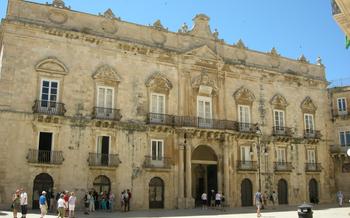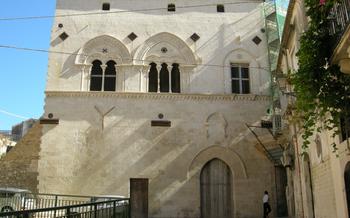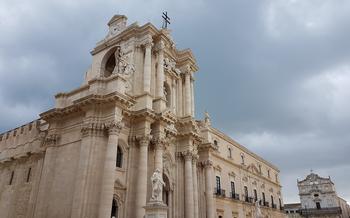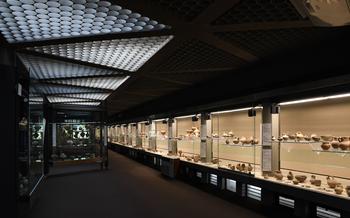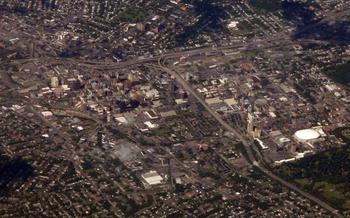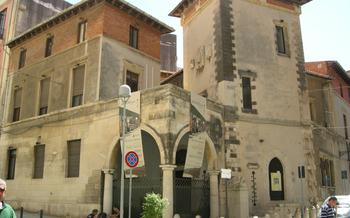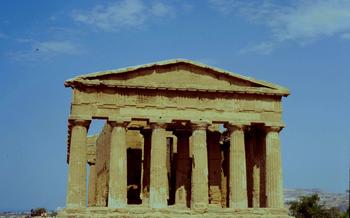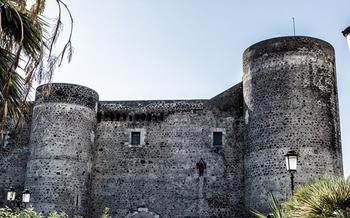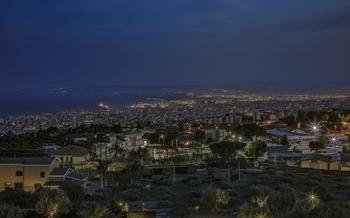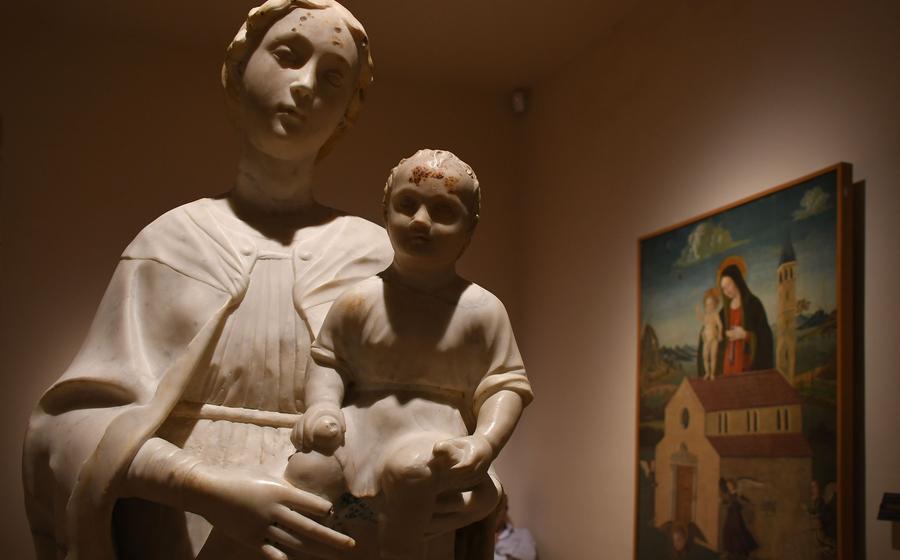
Museo di Palazzo Bellomo
- Introduction
- History of the Museo di Palazzo Bellomo
- The Armoury
- The Paintings Gallery
- The Sculpture Collection
- The Applied Arts Gallery
- The Ceramics Collection
- The Coin Collection
- Guided Tours and Workshops
- Accessibility
- Facilities
- Ticket Information
- Location and Transportation
- Insider Tip
Introduction
Syracuse, a picturesque city on the southeastern coast of Sicily, boasts an illustrious history dating back to the 8th century BC. Once a thriving Greek colony and a powerful maritime empire, Syracuse has left an enduring legacy of artistic and cultural treasures. Among them, the Museo di Palazzo Bellomo stands as a beacon of Syracuse's rich past, showcasing a remarkable collection of artworks, artifacts, and historical relics. Located in the heart of Ortygia, the city's ancient center, the museum occupies a magnificent noble palace that has witnessed centuries of history unfold within its walls.
History of the Museo di Palazzo Bellomo
The Palazzo Bellomo was originally constructed in the 14th century as a noble palace for the aristocratic Bellomo family. Over the centuries, it underwent several renovations and expansions, reflecting the changing tastes and needs of its owners. In the 19th century, the palace was acquired by the Regional Department of Cultural Heritage, which transformed it into a museum. Following this acquisition, extensive architectural changes were made to the palace to adapt it to its new role as a public institution. These changes included the addition of new exhibition spaces, the creation of a central courtyard, and the restoration of the building's original architectural features. The result was a harmonious blend of historical charm and modern functionality, creating a fitting home for the Museo di Palazzo Bellomo.
The Armoury
The Museo di Palazzo Bellomo houses an impressive armoury, showcasing a collection of defensive and offensive weaponry from various historical periods. The collection includes a wide range of items, from ancient Greek helmets and shields to medieval swords and armour. Visitors can marvel at the intricate designs and craftsmanship of these historical artefacts, gaining insights into the military history and warfare techniques of Syracuse and the surrounding region.
Of particular note is a rare 16th-century suit of armour, an exceptional example of Renaissance craftsmanship. The armour is adorned with intricate engravings and decorative elements, highlighting the artistic prowess of the armourers of the period. Another highlight is a collection of beautifully preserved swords, each with a unique design and history. These weapons offer a glimpse into the close-quarters combat techniques and the evolution of swordsmanship throughout the ages.
The armoury also features a section dedicated to firearms, showcasing the development of ranged weapons from early muskets to more modern rifles. Visitors can learn about the impact of these technological advancements on warfare and the changing nature of combat.
The Paintings Gallery
The Paintings Gallery is undoubtedly one of the most popular sections of the museum. Visitors can admire a rich collection of paintings that span different eras, from the Middle Ages to the 19th century. Among the most notable works is the monumental polyptych of Saint Lucy, painted by Antonello da Messina around 1470. The polyptych consists of six tempera panels and depicts the saint surrounded by a host of angels and saints. Another highlight is the "Adoration of the Magi" by Caravaggio, which was painted in 1608-160The painting is characterized by its dramatic lighting and the use of contrasting colors. Other important paintings in the gallery include works by Filippo Lippi, Perugino, Raffaello, and Guido Reni.
The Paintings Gallery is a testament to the artistic wealth of Syracuse and the region of Sicily as a whole. Visitors can learn about the history of art in Sicily and appreciate the diverse styles and techniques of the various artists represented in the collection.
The Sculpture Collection
The sculpture collection at the Museo di Palazzo Bellomo is a treasure trove of masterpieces spanning various periods and artistic styles. A standout piece is the wooden crucifix by Fra Umile da Petralia (1470), which captivates with its intricate details and emotional depth. The marble bust of Proserpina by Antonello Gagini (1530) is another highlight, showcasing the sculptor's virtuosity in capturing the delicate features and ethereal beauty of the mythical goddess.
Equally impressive is the bronze statue of the Dancing Faun by Vincenzo Gemito (1878), which exudes a sense of vitality and energy through its dynamic pose and expressive gestures. Visitors can also admire Giacomo Serpotta's exquisite stucco reliefs (17th century), which adorn the walls and ceilings of the museum's grand halls, depicting scenes from mythology and allegory with intricate craftsmanship.
The Applied Arts Gallery
The Applied Arts Gallery is a treasure trove of exquisite craftsmanship and historical artifacts. Visitors can admire a diverse collection of objects that showcase the skills and techniques of past artisans. Among the highlights of the gallery is a collection of intricate lacework, which includes delicate veils, tablecloths, and handkerchiefs. These pieces demonstrate the exceptional artistry and patience of the lacemakers who created them.
The gallery also features a collection of Majolica ceramics, characterized by their vibrant colors and intricate designs. These works of art, produced in Italy during the Renaissance period, depict scenes from mythology, religion, and everyday life. Visitors can admire the skill and imagination of the ceramists who created these beautiful and highly collectible pieces.
In addition to lace and ceramics, the gallery houses a collection of furniture, textiles, and other decorative objects. These items offer a glimpse into the lifestyles and tastes of the wealthy and influential families who once resided in Syracuse. Visitors can appreciate the quality and craftsmanship of these objects, which have been carefully preserved and displayed in the museum.
The Ceramics Collection
The Museo di Palazzo Bellomo boasts an impressive collection of ceramics that spans different periods and styles, offering visitors a glimpse into the rich ceramic tradition of Syracuse. The collection features a diverse range of pieces, from ancient Greek and Roman pottery to medieval and Renaissance ceramics, showcasing the evolution of ceramic techniques and artistic expression over time.
Among the notable highlights of the collection are exquisite examples of Greek vases, characterized by their elegant shapes and intricate decorations depicting mythological scenes, deities, and everyday life. These vases offer valuable insights into the artistic and cultural achievements of ancient Syracuse.
The collection also includes a significant number of Islamic ceramics, particularly from the 9th to the 12th century, which showcase the influence of Arab culture on the island. These ceramics exhibit intricate geometric patterns, vibrant colors, and refined calligraphy, demonstrating the exceptional craftsmanship of Islamic artisans.
Another highlight of the collection is the impressive array of medieval and Renaissance ceramics, which includes both local and imported pieces. These ceramics feature a variety of subjects and styles, from religious iconography to secular motifs, reflecting the artistic trends and cultural influences of the period.
Overall, the ceramics collection at the Museo di Palazzo Bellomo offers a comprehensive overview of the history and artistry of ceramics in Syracuse and the surrounding region, making it a must-see for anyone interested in the decorative arts and the cultural heritage of Italy.
The Coin Collection
The numismatic section, arranged on the ground floor, displays a collection of coins from various periods of Sicilian history. A rich collection of coins, mostly bronze, but also gold and silver, illustrates the monetary history of Syracuse and Sicily from the archaic to the late imperial age. The ancient coins were often minted in Syracuse and other Sicilian cities and used for daily transactions. The coins bear witness to the economic and political power of the ancient cities of Sicily and provide valuable insights into their history and culture. The exhibition includes coins from the Greek, Roman, and Byzantine periods, each with its distinct characteristics and artistic styles. The collection is particularly rich in coins from the Greek period, including beautiful silver tetradrachms depicting various deities and mythological scenes. The exhibition also features coins from the Roman and Byzantine periods, documenting the changes in coinage and economy during those times.
Guided Tours and Workshops
The Museo di Palazzo Bellomo offers a series of guided tours that allow visitors to explore the museum's collection and learn more about its history. Tours are available in English and Italian and typically last for about 60 to 90 minutes. Visitors can book tours in advance or on the day of their visit.
The museum also offers a range of workshops and educational programs for adults and children. These workshops provide participants with the opportunity to learn new skills and techniques, such as painting, sculpture, and ceramics. Workshops are typically held on weekends and during school holidays.
Guided tours and workshops offer visitors a unique opportunity to learn more about the museum's collection and the history of Syracuse. They are an excellent way to make the most of your visit to this fascinating museum.
Accessibility
The Museo di Palazzo Bellomo is committed to providing an inclusive and accessible experience for all visitors. Visitors with disabilities can take advantage of several special services and facilities to ensure a comfortable and enriching visit.
Wheelchair users and individuals with limited mobility will find the museum fully accessible, thanks to ramps and elevators that connect all levels of the building. Additionally, wheelchairs are available for loan at the museum's entrance, so visitors can easily navigate the galleries and exhibits without the need to carry their own.
To enhance the experience for visually impaired visitors, audio guides are available in multiple languages. These guides provide detailed descriptions of the artworks and exhibits, allowing visitors to delve deeper into the museum's collection.
The museum also offers sign language interpretation upon request, ensuring that deaf or hard of hearing visitors can fully participate in guided tours and educational programs.
For visitors with cognitive disabilities, such as autism or dementia, the museum offers specialized sensory-friendly tours. These tours are designed to create a supportive and understanding environment, allowing individuals with cognitive challenges to engage with the museum's collection in a meaningful way.
Facilities
The Museo di Palazzo Bellomo offers a range of facilities to enhance the visitor's experience. Visitors can browse through a selection of art-related books and publications at the on-site bookshop. The cafeteria provides a welcoming space to relax and enjoy light refreshments or a quick bite to eat. Restrooms are conveniently located within the museum for the comfort and convenience of visitors. For added convenience, the museum offers a cloakroom and lockers where visitors can safely store their belongings during their visit, allowing them to fully immerse themselves in the museum's exhibitions without having to carry their bags or coats. These facilities ensure that visitors have a comfortable and enjoyable experience while exploring the diverse and fascinating collections of the Museo di Palazzo Bellomo.
Ticket Information
Admission to the Museo di Palazzo Bellomo is subject to a fee, with different rates applicable to various visitor categories. A standard full-price ticket allows for general admission to the museum's permanent collection and temporary exhibitions. Visitors who qualify for reduced admission, such as students, senior citizens, and holders of certain cultural heritage cards, are eligible for discounted rates. Children under the age of 18 are admitted free of charge.
The museum offers a range of ticketing options designed to enhance visitor convenience and affordability. Advanced purchase of tickets online is available through the museum's official website, allowing visitors to skip the queues and secure their entry. Alternatively, tickets can be purchased directly at the museum's ticket counter upon arrival.
Keep an eye out for special promotions and temporary exhibitions that may offer reduced admission or free entry. These events provide an excellent opportunity to explore the museum's diverse collection and delve deeper into specific artistic periods or themes without incurring additional costs.
Location and Transportation
The Museo di Palazzo Bellomo is conveniently situated in the heart of Syracuse's historical center, on Via Capodieci. Its strategic location allows visitors to immerse themselves in the city's rich heritage and explore other landmarks and attractions within easy walking distance.
To reach the museum, take advantage of the excellent public transportation network. Several bus lines, including the number 12 and 13, stop nearby, providing easy access from various parts of the city. Alternatively, hop on the scenic hop-on hop-off bus that circles Syracuse's main attractions, including the Museo di Palazzo Bellomo.
After your visit, take some time to explore the surrounding area. The museum is a short stroll from the majestic Piazza Duomo, home to the iconic Syracuse Cathedral and the Archbishop's Palace. Don't miss the opportunity to wander through the narrow streets of Ortygia, the oldest part of Syracuse, where you'll find charming boutiques, inviting cafes, and hidden gems waiting to be discovered.
Insider Tip
- To fully appreciate the grandeur of the Museo di Palazzo Bellomo, plan your visit during the off-season (November to March) to avoid the throngs of tourists and relish a more intimate experience. Additionally, keep an eye out for the hidden gem of the museum — the Sala delle Arti Minori, which houses an intriguing collection of everyday objects that provide a glimpse into the lives of ordinary Syracusans throughout history.
